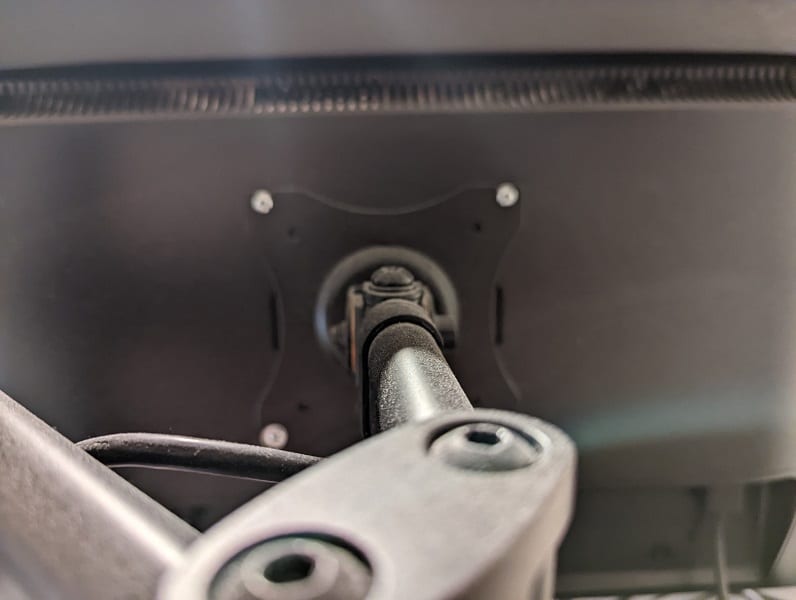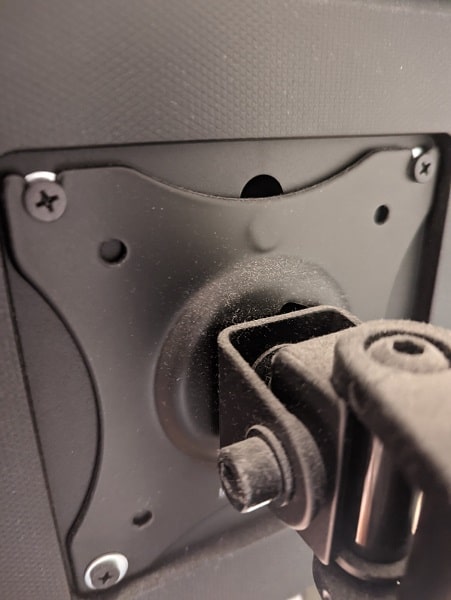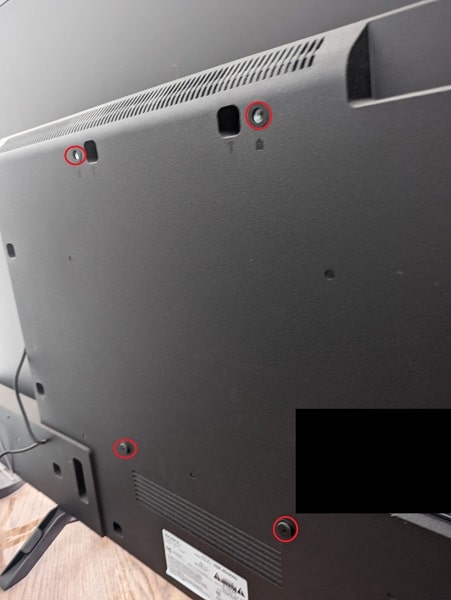The G7 and G9 are two of the latest curved gaming monitors released by Samsung.
If you want to mount these PC screens on your desk, whether if you want to save space or want more maneuverability, then you can check out this guide to find the best available desk mounts.
Screen Sizes
The Odyssey G7 is available in 27″ and 32″ variants. The Odyssey G9 is only available in 49″.
You can check out the model number for each screen size below.
- 27″ Samsung Odyssey G7 Curved Gaming Monitor: C27G75TQSNXZA
- 32″ Samsung Odyssey G7 Curved Gaming Monitor: LC32G75TQSNXZA
- 49″ Samsung Odyssey G9 Curved Gaming Monitor: LC49G95TSSNXZA
Weight without Stand
Desk mounts have a weight capacity limit. As a result, you need to know how much your curved monitor weighs.
You can find the weight, without the stand attached for each model, below.
- 27″ Samsung Odyssey G7 Monitor: 15.9 pounds
- 32″ Samsung Odyssey G7 Monitor: 18.1 pounds
- 49″ Samsung Odyssey G9 Monitor: 31.1 pounds
Dimensions without Stand
Of course, you also need to make sure that you have enough room on your desk for your new monitor. If you are planning to move your G7 or G9 around, then make sure you leave some extra room in order to do so.
You can find the full measurements for the curved gaming monitors below.
- 27″ Samsung Odyssey G7 Monitor: 24.2″ x 22.68″ x 12.04″
- 32″ Samsung Odyssey G7 Monitor: 27.96″ x 23.41″ x 12.04″
- 49″ Samsung Odyssey G9 Monitor: 45.18″ x 14.31″ x 11.46″
VESA Pattern
One last element you should take into account before thinking about mounting your monitor to a desk is the VESA Pattern. The specification measures the amount of space between the four mounting holes located on the back of your G7 or G9.
You can check out the VESA patterns below.
- 27″ Samsung Odyssey G7 Monitor: 100 mm x 100 mm
- 32″ Samsung Odyssey G7 Monitor: 100 mm x 100 mm
- 49″ Samsung Odyssey G9 Monitor: 100 mm x 100 mm

Compatible desk mount for 27″ and 32″ Samsung Odyssey G7
For the Samsung Odyssey G7, the best option is the HUANUO Gas Spring Single Arm Monitor Desk Mount.
With this install, you will be able to extend your curved monitor all the way out to 22.4 inches. You can also adjust the height from a range of 16.9 inches to 26.3 inches. Furthermore, you can tilt up to 30 degrees upward, tilt up to 85 degrees downward, swivel up to 90 degrees to the left, swivel 90 degrees to the right and even rotate up to 360 degrees.
The HUANUO supports the 100 mm x 100 mm VESA patterns of the 27″ and 32″ Samsung Odyssey G7 Curved Gaming Monitors. With a weight capacity of 19.8 pounds, it can easily hold the PC screens.
The clamp will take up 3.94 inches of space at the back of your desk. For installation, you can either use the C clamp (if your desk has a thickness of 0.63 inch to 2.95 inches) or grommet mounting (for desks with up to 3.93 inches in thickness).
If you are interested, you can purchase the Odyssey G7 desk mount on Amazon with the following link:
Compatible desk mount for 49″ Samsung Odyssey G9
If you have the Samsung Odyssey G9, then the best option is WALI’s Premium Single LCD Monitor Desk Mount Fully Adjustable Gas Spring Stand.
With this product, you will be able to tilt your big PC display up to 15 degrees upward, tilt up to 15 degrees downward, swivel up to 50 degrees to the left, swivel up to 50 degrees to the right in addition to changing the height from the range of 10.1 inches to 21.5 inches.
This desk mount supports the 100 mm x 100 mm VESA pattern of the Samsung Odyssey G9. It also has a weight limit of 66 pounds, which is more than enough to hold the weight of your computer screen.
For installation, you can use either C clamp or grommet mount. The desk thickness should be no more than 3.5 inches.
You can purchase the Odyssey G9 desk mount, if you are interested, with the following link on Amazon:


